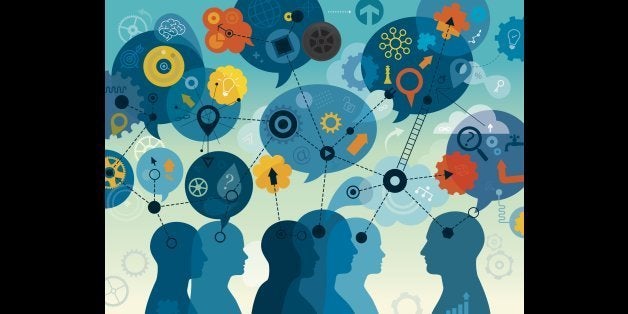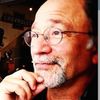
What is it that all human beings share in common other than the need for air, water, and the undeniable fact that they will answer this question in a wide variety of ways? Well, at the risk of disturbing the people likely to answer this question in a wide variety of ways, I would venture to say a deeply ingrained need to know -- a search for the kind of timeless wisdom they need to experience in order to truly thrive.
For some of us, this knowledge-seeking impulse revolves around survival -- how to grow food, create shelter, and avoid being eaten by the nearest predator. For others, whose survival needs are already met, this knowledge-seeking drive takes the shape of more esoteric knowing -- understanding how the universe works, for example, or how to make a killing in the world of credit default swaps. For others, with more of a spiritual bent, it might take the shape of "knowing God" or "knowing the Self."
Regardless of the knowledge-seeking motivation that drives a given individual, all knowledge seekers share one thing in common -- and that is a thirst to understand something they don't yet understand -- an insight, know-how, or epiphany they believe will add more value to their lives.
If this impulse towards knowing is, indeed, universal, then the question we need to be asking is this: "What is the most effective way to obtain the knowledge we seek?" In other words, how do we learn what we don't already know? And, perhaps even more importantly, how do we know what it is we really need to learn?
Traditional knowledge seekers answer this question in fairly predicable ways -- an approach that usually frames the missing knowledge as a commodity that can be secured. "Ask someone who knows" might be one person's approach, or "read a book" or, more recently, "Google it" -- the common assumption being that our missing knowledge is codified somewhere and can be communicated in a way that is immediately transferable. And while there are definitely benefits to this kind of explicit knowledge transfer, the approach is inherently flawed, given the fact that there are many "things to learn" that cannot be learned this way.
Riding a bicycle, for example, is more easily learned by observing somebody riding a bicycle and then actually getting on a bike and experimenting than it is by reading a book about bike parts or the physics of bike movement. The same holds true for learning a language or kneading dough -- neither of which can be mastered by reading a list of instructions from experts. Each of these activities require a transfer of tacit knowledge -- the difficult-to-describe, intuitive, experience-based wisdom from someone "in the know".
It was Michael Polanyi, in 1958, via his magnum opus, Personal Knowledge, who first introduced the concept of tacit knowledge to the Western world -- his attempt to communicate that "we know more than we can tell" and that this knowing requires extensive, ongoing, personal contact with "people in the know", respect for pre-logical knowing, practice, and a healthy dose of trust. Some years later, Japanese organizational theorist, Ikujiro Nonaka, added his take on the matter, applying the tenets of tacit knowledge to the now growing field of knowledge management.
Whereas science is "know why" and networking is "know who", tacit knowledge is "know how" -- how homo sapiens (the "wise ones") transfer what they know to others in the most elegant, effortless, and effective way possible.
These days, as technology continues to escalate at an exponential rate, markets shift, and employee turnover increases, many forward thinking companies are doing what they can to codify their knowledge, building sophisticated software and knowledge management systems to ensure the ongoing transmission of know how within their enterprise. And while their attempts are laudable, the fact remains that the transfer of tacit knowledge -- the intuitive, hard to articulate, feeling level knowing that is often the difference, as Mark Twain once explained, between lightning and the lightning bug -- remains extremely difficult to capture.
What does all of this have to do with storytelling? A lot. Because storytelling remains one of the simplest and most effective ways that human beings have discovered to communicate the essence of what they know and value.
And while it's true that tacit knowledge can never be 100% codified, the fact remains that story is know how's closest surrogate. Indeed, story is how the great Wisdom Teachers, since the beginning of time, have chosen to communicate their message. If you have any doubts, all you need to do is deconstruct your favorite holy book and you'll discover that story (in the form of parable, allegory, and myth) is the main ingredient.
The bottom line? If you want to increase the amount of meaningful communication in your organization, community, or team, find a way to go beyond the two-dimensional transfer of explicit knowledge, capture and distribute tacit knowledge, and begin telling the kind of stories that have, embedded with them, great power, insight, and wisdom.
Here are five ways to begin:
1. Conduct interviews with your organization's tacit knowledge keepers. Talk to them. Find out what they really know.
2. Create opportunities for people to observe and apprentice with your organization's tacit knowledge keepers. (If you want to master something, get closer to the Masters).
3. Record, distribute, and tell organizational stories that communicate key learnings, insight, and wisdom. Get the word out, orally, in writing, or online. Whatever works.
4. Initiate more hands on "action learning" experiences (where doing replaces rote learning and intellectualization.)
5. Get people together in small groups to share their wisdom stories with each other.
"The world is made of stories, not atoms." -- Muriel Rukeyser
Mitch Ditkoff is the Co-Founder and President of Idea Champions, an innovation consulting and training company headquartered in Woodstock, NY. His recently published book, Storytelling at Work, is all about the transfer of tacit knowledge via the telling of stories. To help get the word out, he also does keynotes and workshops on this little understood topic.

